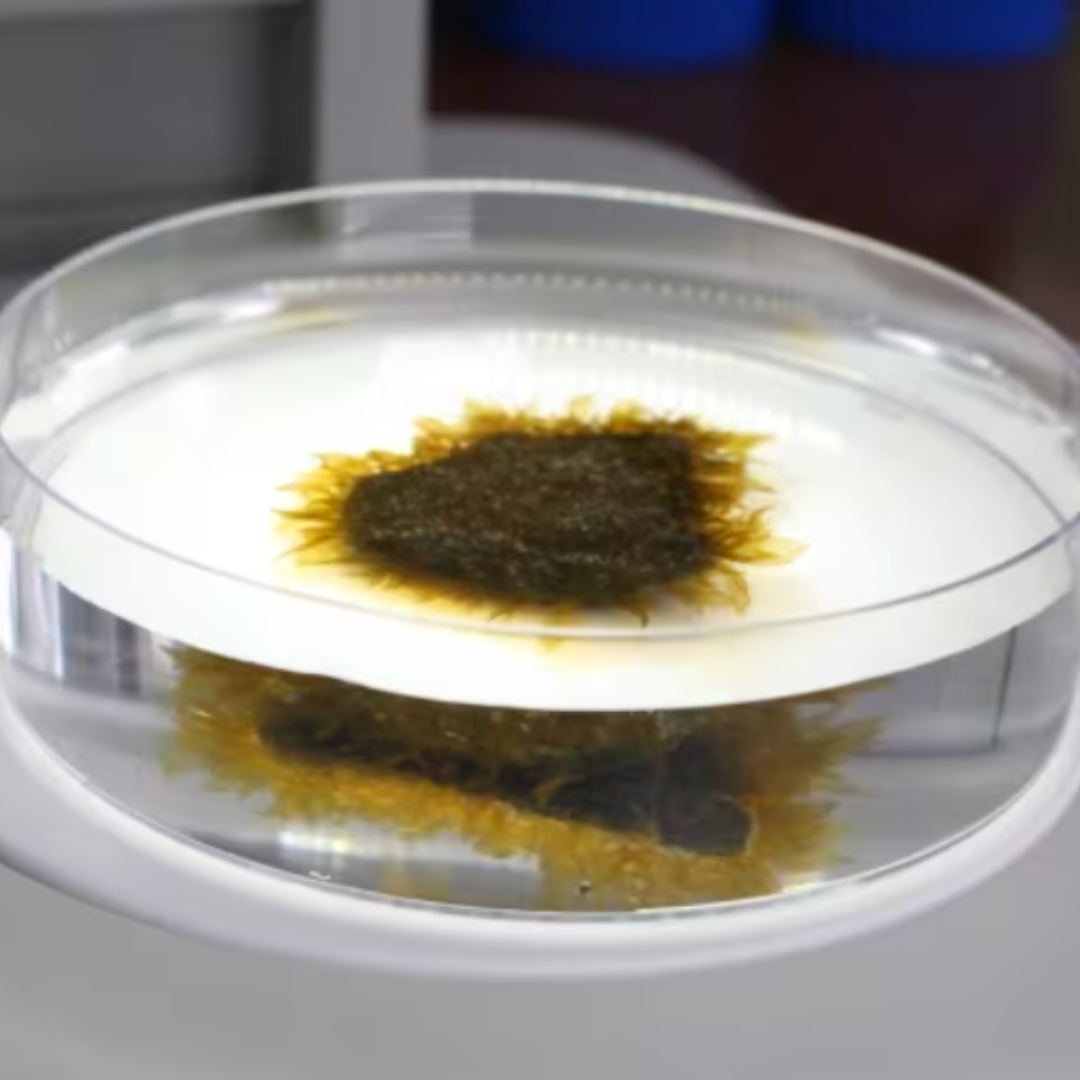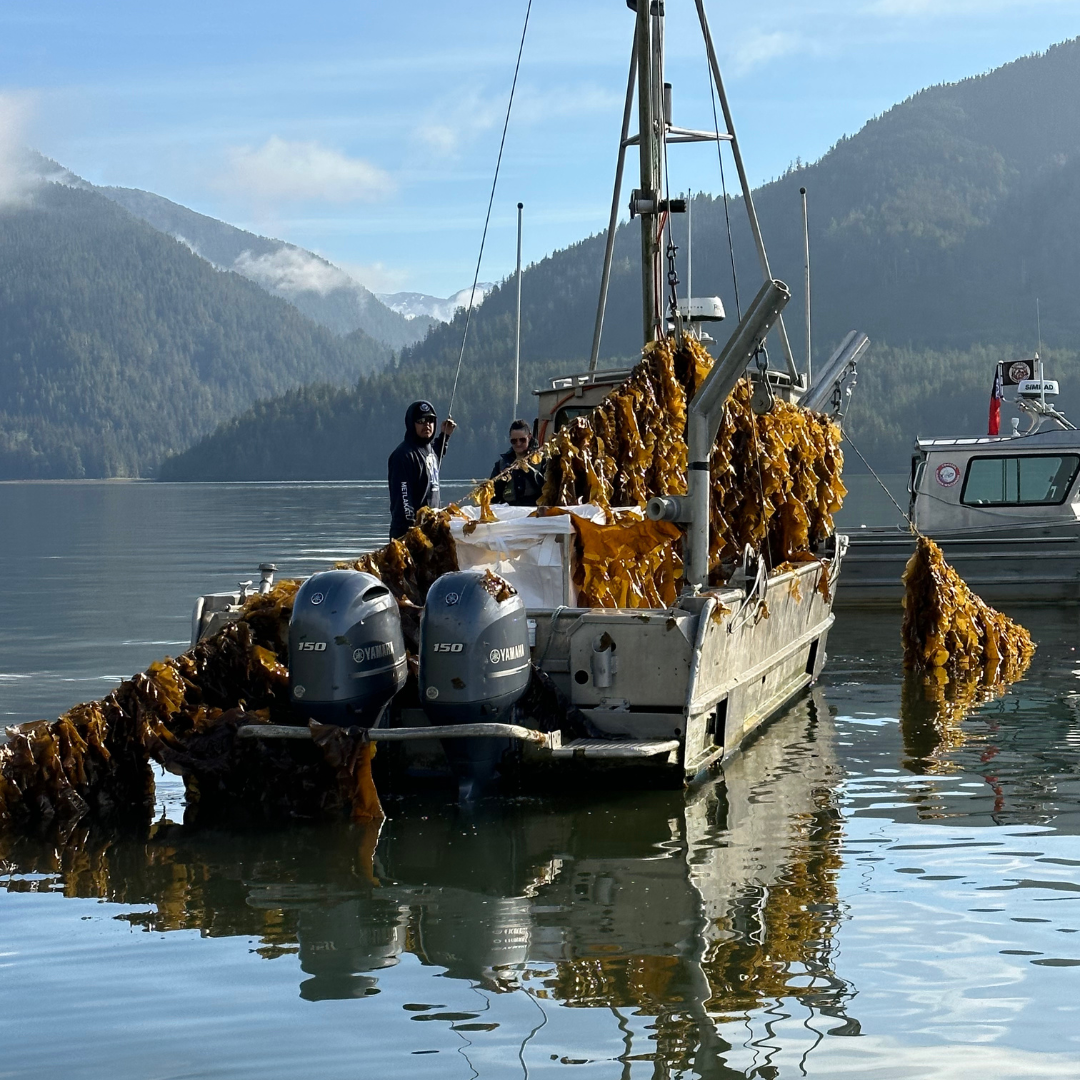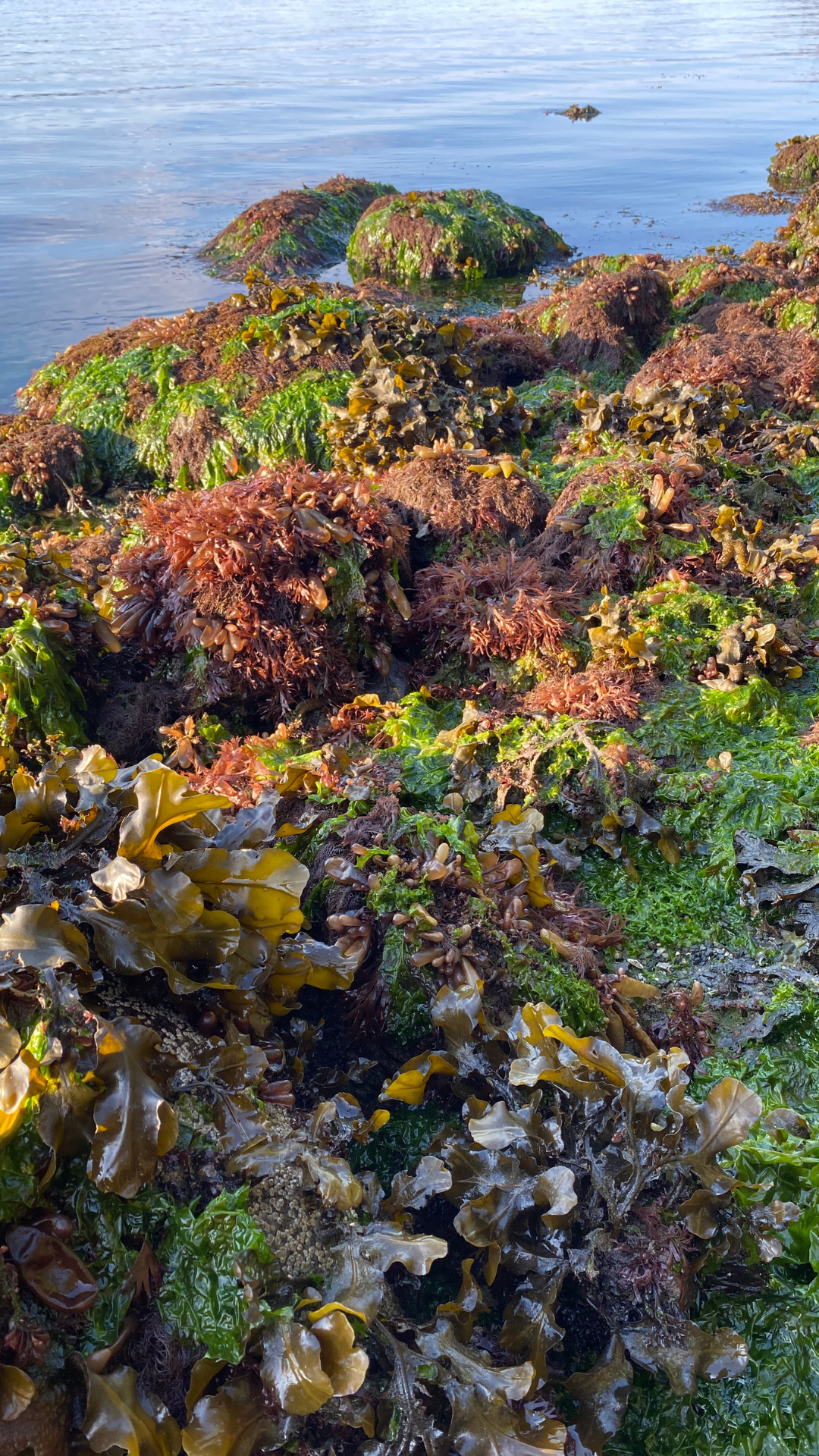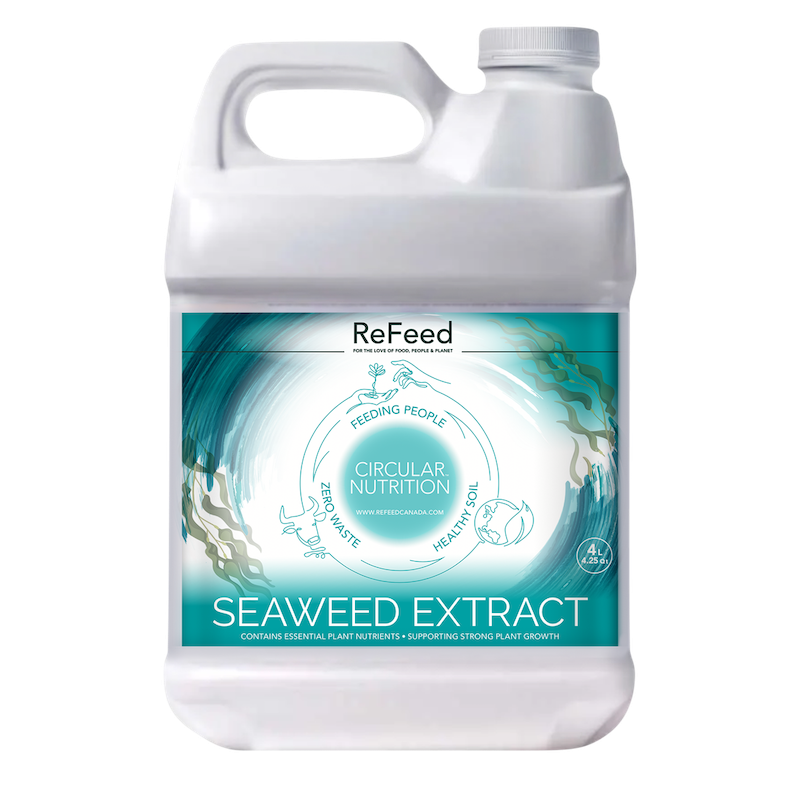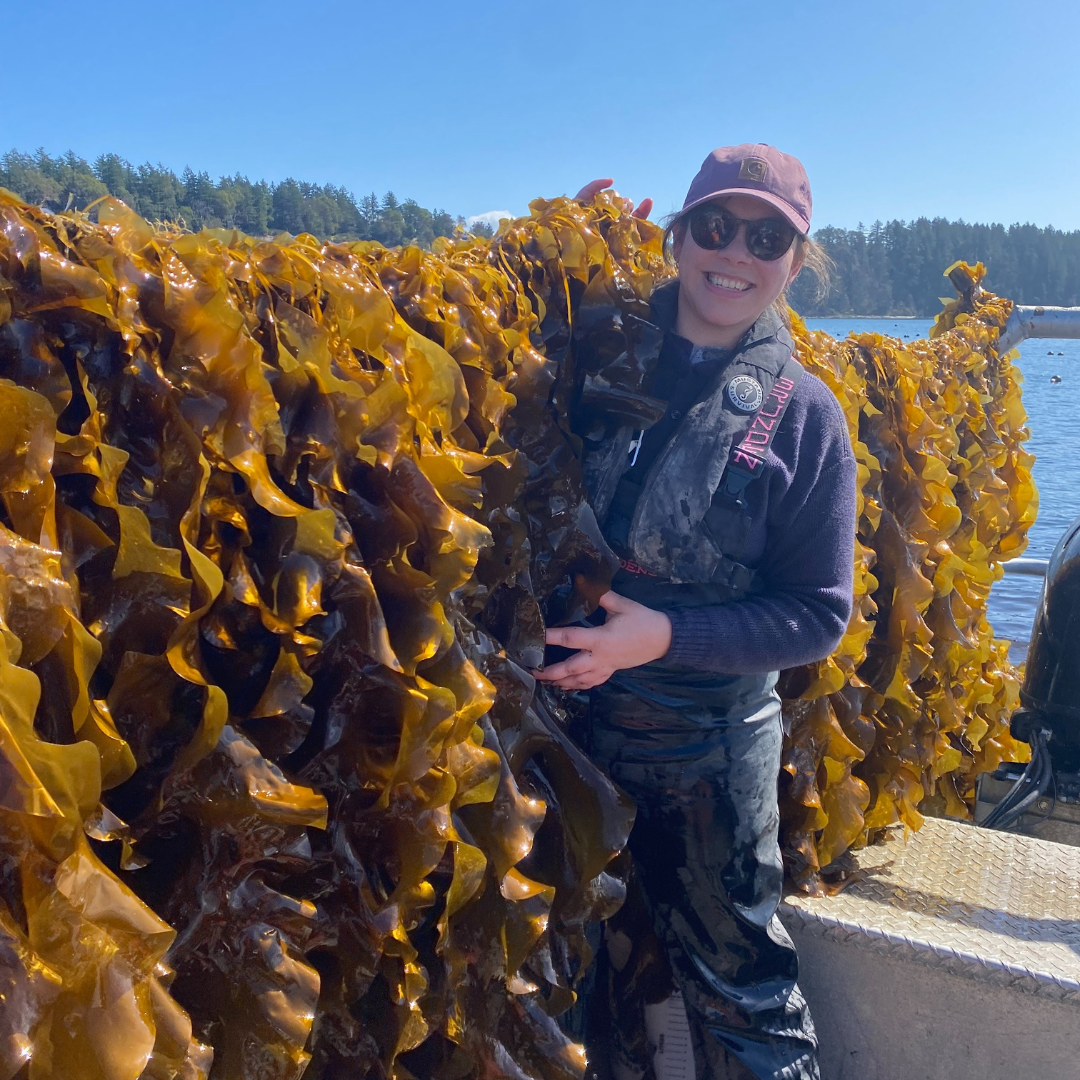At Cascadia Seaweed, we cultivate local species of seaweed and manufacture products for crop and cattle farmers.
Algae is making its way from the bottom of the sea to your kitchen cabinet.
So you’ve got your leafy vegetables and hearty legumes down pat. But if you haven't already, there’s another kind of green you might consider adding to your diet: algae.
Yes, the slimy stuff that grows in bodies of water is remarkably edible – and nutritious. And it’s not exactly a new addition to the culinary world. Seaweed is just algae that grows in the ocean, and if you’ve ever enjoyed sushi or miso soup, you know how tasty the marine plant can be. All different sorts of seaweed are commonly used in food, from nori (that’s what your sushi is wrapped in), wakame, and kelp – often used in salads and soups – to agar and carrageenan, used as thickening and binding agents in many plant-based foods. Exact nutritional properties vary by type, of course, but on the whole, edible seaweed tends to be extremely dense in nutrients needed by the human body.
Other kinds of algae have become common supplements and food ingredients in recent years, especially spirulina and its derivative E3 blue majik. In the health food corner of Instagram, you’ve probably seen the proliferation of smoothies and other beverages in stunningly saturated shades of blue and green. That’s because in addition to its fun and unusual color, there is evidence to suggest that algae offers a whole host of health benefits, from its impressive antioxidant and B vitamin content to its surprising protein density. It’s even been found to have possible antivirus, anti-cancer, and anti-allergy properties worth further scientific study.
Tapping into an ancient innovation
Again, none of this is new. Spirulina was known and used by the Aztecs, and was reintroduced to popular culture in modern times by NASA. Now there are a host of innovative companies and food scientists finding clever and novel uses for algae in our modern diets. As we look for ways to nourish the world’s growing population while mitigating the environmental impacts of our food systems, the slimy green aquatic plant just might be a problem solver. It’s little wonder that the algae industry is expected to grow from its estimated $717,140,000 valuation in 2018 to a predicted $1,365,800,00 in 2027. There’s much more than seaweed salads and smoothie bowls coming down the pike.
One company has already been praised for its simple, but apparently genius use of seaweed.
AKUA’s kelp jerky has been recognized as an Invention of the Year for Sustainability by TIME Magazine and by Fast Company’s World Changing Ideas Awards. The snacks, apart from being tasty, are high in protein, iron, and B vitamins. And what makes them notable from a sustainability perspective is that the kelp used is farmed regeneratively: It provides habitat for aquatic life, protects the coast from storms, and absorbs carbon from the water.
Some companies are making simple and subtle swaps to incorporate algae into foods we already know and love. Pop Zero Popcorn makes their products – simply flavored popcorn – with one unique difference: algae oil in place of sunflower oil or more commonly used vegetable oils. In addition to the vitamins, protein, and omega-3s present in algae oil, Pop Zero boasts that their algae oil-popped corn is lower in saturated fats and higher in monounsaturated fats than more traditional products.
Paying mind to the environmental impact of where our food comes from, Pop Zero also uses algae oil because it has a dramatically higher crop yield per acre than other plant-based oils, like coconut and canola. So not only is it a better-for-you snack choice, it’s a more economical use of land as well.
Not just sustainable, but regenerative
In fact, algae requires remarkably few resources to grow. In addition to low land needs, it also doesn’t require fresh water, fertilizers, or pesticides. One company, Cascadia Seaweed, has seized onto this and has made their business cultivating seaweed for a variety of uses, from food to packaging. Cascadia argues that the cultivation of seaweed can create habitats for other marine life, use up excess ocean nutrients, and possibly even mitigate ocean acidification. According to the company, the process of seaweed cultivation is not just low in negative impact, it actually has a net positive impact on the environment.
Cascadia is working with companies in all different sectors to transform their cultivated seaweed for a wide array of uses: ready-to-eat fresh, dried, and frozen seaweed options, along with flavorings and binding ingredients in industrial food preparation, and even altogether non-food uses like cosmetics and eco-friendly packaging. Back of the Yards Algae Sciences is another startup that’s developing algae products for use as plant-based protein food supplementation as well as food coloring, along with non-food uses like agricultural biostimulants. Their lab, which is based in Chicago, focuses on developing commercially viable uses for algae derivatives.
But even as inventors look more and more broadly at the potential uses of algae, they keep coming back to food. The Dutch startup Seamore has come up with an array of tasty products made partially or entirely of seaweed. Their chips, wraps, pasta, and “bacon” offer highly nutritious, plant-based options to sub for the starchy and fatty foods we love – while still packing a flavorful punch.
In today’s world, virtually everyone has a little bit of both foodie and health nut in them. It seems likely that we’ll only see more and more companies trying to marry taste and nutrition, along with convenience, affordability, practicality, and other consumer concerns. Algae continues to be a key ingredient in foods and other products made for the contemporary consumer, all while balancing the needs of our threatened planet.

By Erin Bremner-Mitchell
•
16 Jun, 2023
Seaweed’s greatest potential to be both commercially successful and environmentally positive is using it as a biostimulant in order to increase terrestrial crops yields, while reducing the traditional agriculture sector’s reliance on chemical fertlisers, rather than as a means of sequestering blue carbon.
C - 9774 Third Street Sidney British Columbia V8L 3A4
Email: info@cascadiaseaweed.com
Phone: 1-778-351-4484

9774 - C Third Street Sidney British Columbia V8L 3A4
Email: info@cascadiaseaweed.com
Phone: 1-778-351-4484

